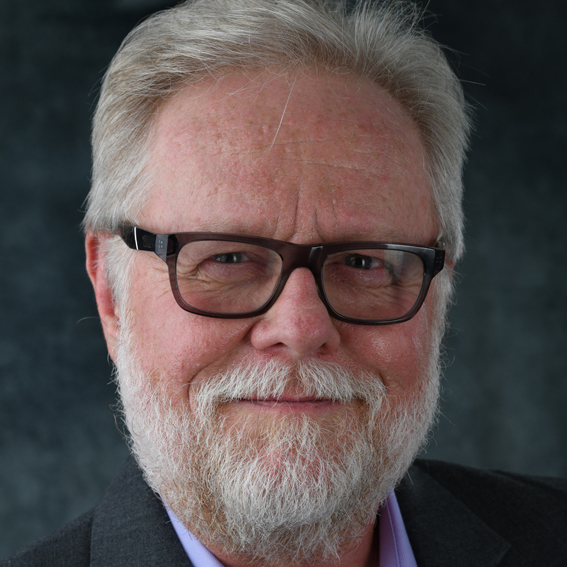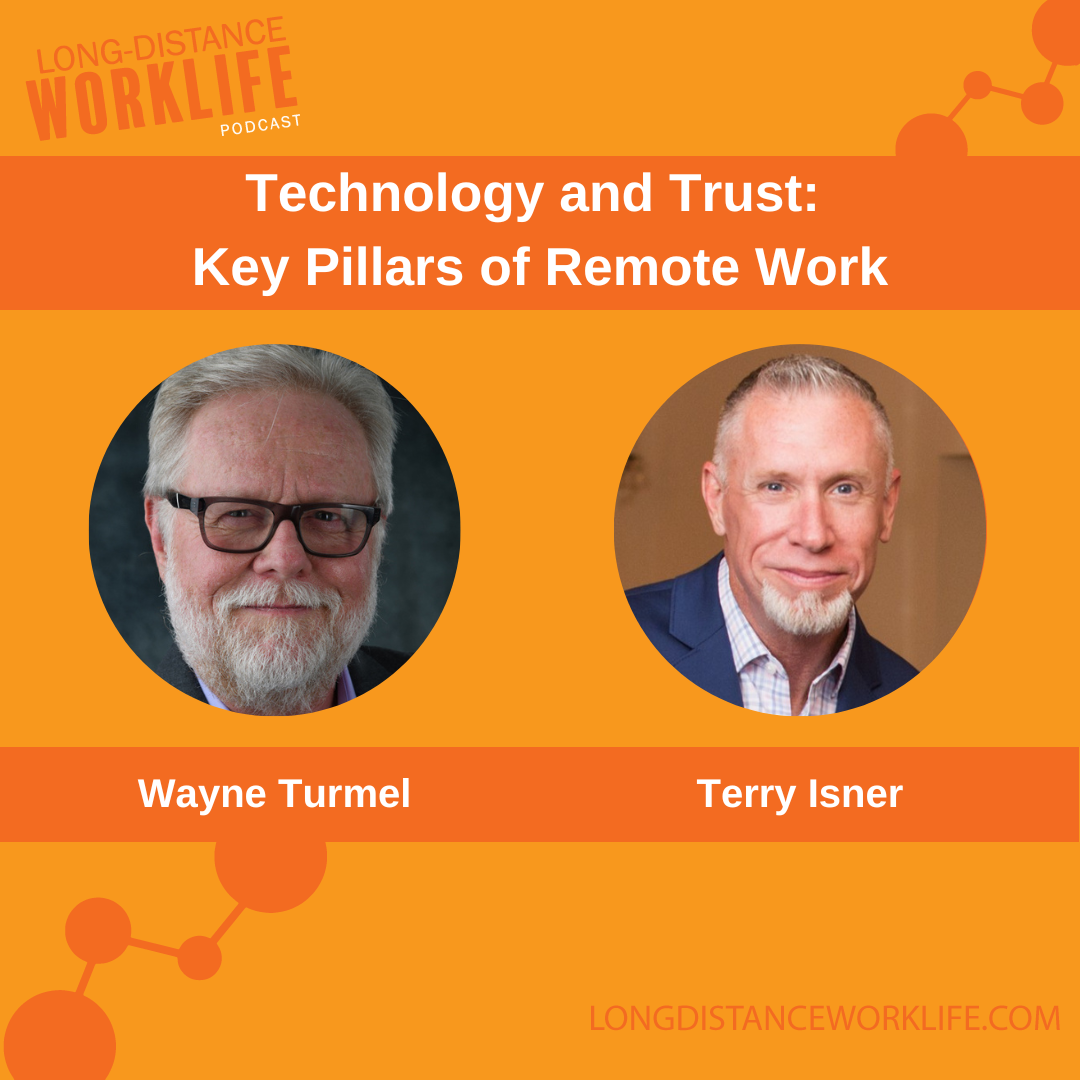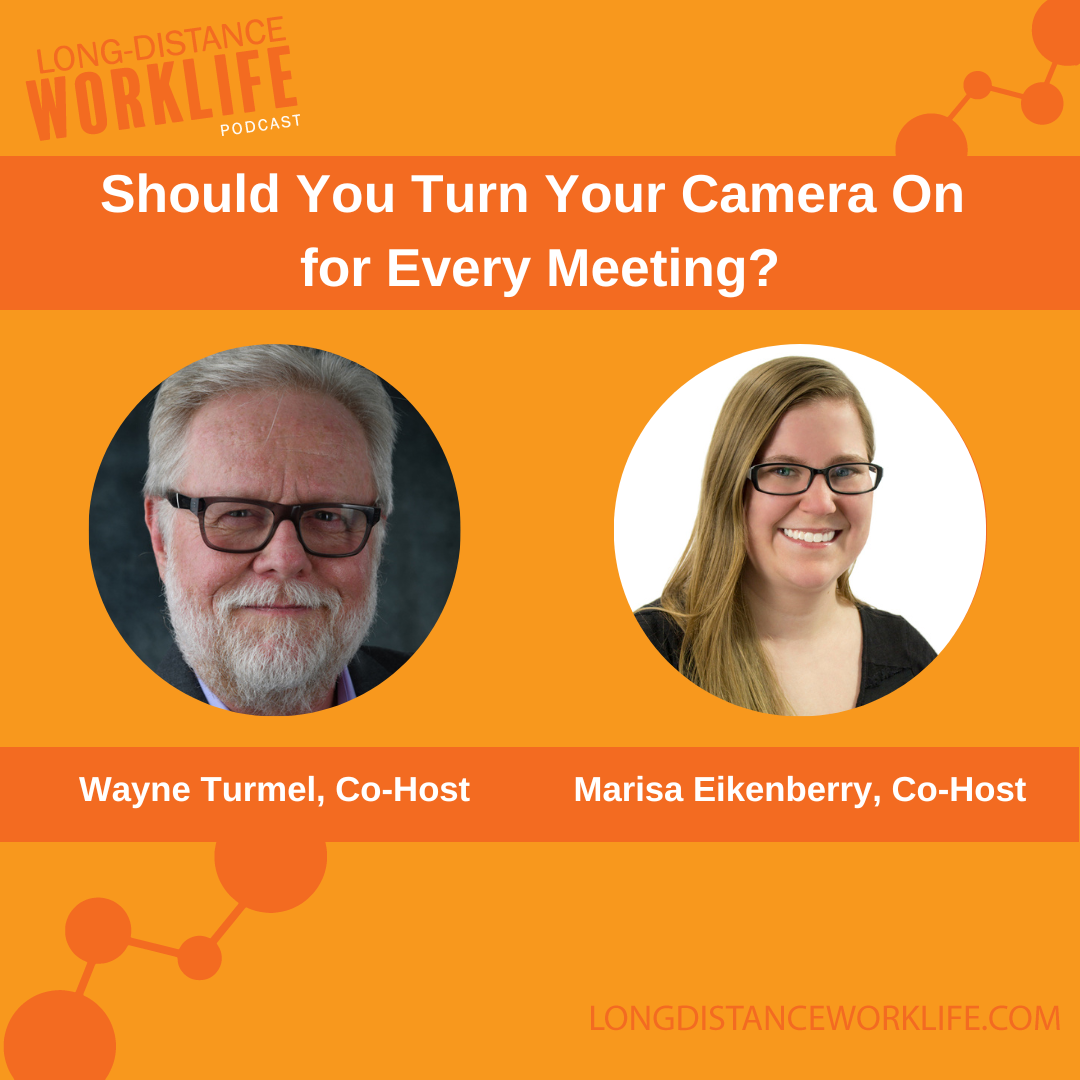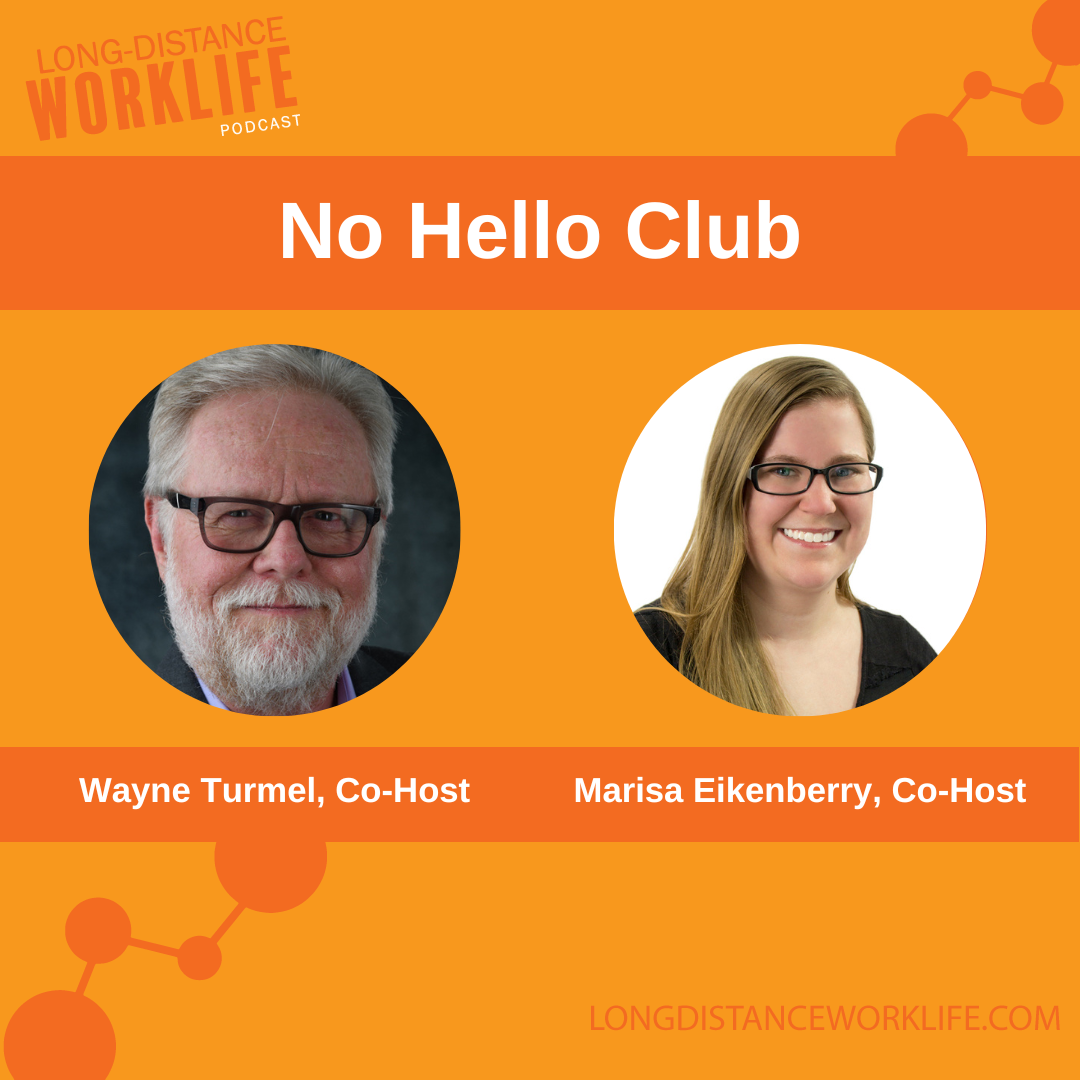Wayne is joined by Dr. Mary O'Connor of Vori Health to talk about what remote teams can learn from telemedicine. Vori Health is an remote business and Dr. O'Connor discusses how it's possible to practice medicine (traditionally something very hands-on) remotely as well as how telemedicine rose even before the pandemic.
Additional Resources
Free Video Series!
Join us for a powerful, 4-part video series titled, Demystifying Remote Leadership. You will learn how to create solid working relationships in a virtual team with more confidence and less stress!
00:00:08:02 - 00:00:33:03
Wayne Turmel
Hi everybody. Welcome back to the Long-Distance Worklife podcast where we try to make sense of remote work, hybrid work, work from home, all of that foolishness to keep the weasels at bay. Thank you for joining us, as always. This is a Marisa-less episode because I actually have a guest today and I'm going to introduce her now.
00:00:33:04 - 00:01:02:23
Wayne Turmel
This is Dr. Mary O'Connor. She is the brains behind Vori Health. And what I thought we would do today is talk less traditional remote work and more how other fields are dealing with what all of us are dealing. And nowhere are we seeing more of this radical change than in the area of telemedicine. So Mary, if you would, just introduce yourself real quick.
00:01:02:23 - 00:01:06:18
Wayne Turmel
What does very help do and then will get into the discussion?
00:01:07:13 - 00:01:36:09
Mary O'Connor
Great. Wayne, I'm just delighted to be with you and your listeners and viewers today. So my name is Mary O'Connor. I'm an orthopedic surgeon. By background, I am the chief medical officer and co-founder of Vori Health, and we are a virtual musculoskeletal medical practice, meaning we take care of people with spine and joint and muscle problems, which, as you know, are extremely common, especially as we get older.
00:01:37:01 - 00:02:06:23
Wayne Turmel
As I sit waiting for my knee replacement, I can completely understand. Here's the thing that fascinated me and why we wanted to have the conversation. There are two things. One is that you are a completely virtual business, and that is fascinating. The other thing is when we think about knees and backs and that kind of thing, we always think of this as very hands on like you need to be there right up.
00:02:07:16 - 00:02:15:05
Wayne Turmel
How do you do orthopedic work and not be in the room with the joint that you're talking about?
00:02:15:14 - 00:02:46:00
Mary O'Connor
So I know that's a great question and one I get frequently, and the answer's pretty straightforward. There's a tremendous amount that you can do through virtual only interactions with patients. Number one, the first thing that a lot of patients and people don't know or recall is that the majority of the decision making process by their doctor in terms of what their doctor thinks is going on, is based on the patient's history.
00:02:46:17 - 00:03:14:16
Mary O'Connor
So the history is really important. How long was your back hurting? Did you injure it? What makes it worse? What makes it better? Those kinds of things. The physical exam is still important, but there's a huge amount of it that you can do actually. You know, virtually. So there's there's very little limitations. And most of the decision making process is going to be based on the information that you can obtain virtually.
00:03:15:01 - 00:03:40:18
Mary O'Connor
And when my orthopedic surgeon colleagues challenged me on this point, I will give them a perfect example of it. Someone who injured their knee. Okay. And the question is, did they tear their anterior cruciate ligament? That decision on whether to get an MRI scan of their knee to prove if they had a tear is going to be based 95% on the history of the injury.
00:03:40:23 - 00:04:09:16
Mary O'Connor
And looking at the knee, you don't have to put your hands on to do some ligament testing to drive the decision making about the MRI. So we're the first to say not all care can be delivered virtually, but a surprising amount can. And where that becomes so important is particularly for your audience, because working people just don't have time like it is.
00:04:09:21 - 00:04:30:00
Mary O'Connor
It is a huge amount of time to actually go in to see your doctor or your physical therapist out of your workday. And so offering these virtual services is extremely convenient and time efficient for patients. And they they really appreciate that.
00:04:30:00 - 00:05:12:11
Wayne Turmel
There is and I was thinking about this interview, there is a real corollary between a lot of the remote work that we had to do suddenly when COVID hit and the move to telemedicine, one of those things is there's a lot of skepticism about can it be done right then in you've already addressed some of that. Tell me what happened kind of in the xigaze is the wrong word, but it sounds impressive and it's the only one I can think of what shifted people's thinking when COVID hit, because that really pushed telemedicine over the Rubicon like it did so much remote work.
00:05:13:11 - 00:05:46:15
Mary O'Connor
Well, obviously what happened is people were afraid to go in for in-person services and clinics shut down. You know, I was at work where I was working at Yale at the time. And, you know, we literally just shut everything down except for true emergency services. And that was really challenging because patients still needed care. And so it was a phone call or we started doing Zoom calls, right.
00:05:46:22 - 00:06:21:03
Mary O'Connor
Because because the the technology and the functionality of telemedicine existed long before we got into the COVID pandemic. But it was never embraced by the medical profession for a couple of reasons. One, change is hard. Why change if what I'm doing, you know, I just want keep doing what I'm doing. And secondly, and what was very important is that the federal government, Medicare and commercial insurers were not paying clinicians for telemedicine services.
00:06:21:12 - 00:06:38:06
Mary O'Connor
So when the pandemic came, the legislation was introduced that basically said, okay, everybody is going to now pay for telemedicine services. And that was obviously critically important.
00:06:38:06 - 00:07:03:01
Wayne Turmel
One of the things that I find really interesting about this is there was this when telemedicine started, part of the resistance was, well, it's making the best of a bad situation, right? I can't go into the doctor, so I guess I'll get to see the doctor. And there's this mindset that just there's a lot of remote work was, well, we can still get our work done, but it's not as good as being in the office.
00:07:04:02 - 00:07:26:20
Wayne Turmel
You actually have identified some real advantages. I mean, one of them is the convenience to the patient. But in terms of the way that your team works together, there's been some real advantages to telemedicine, which makes this not just, you know, making the best of something, but actually making it better when.
00:07:26:20 - 00:08:01:20
Mary O'Connor
Absolutely. So, you know, what we can do with a virtual platform is something that actually cannot realistically happen in the in-person settings. So when patients come to us and we're very I'll digress for a moment, we're very focused on what we call the bio psychosocial model, because we we understand that the patients are like whole beings, right? And their health is influenced not just by their injury or their back pain, but by their sleep and their nutrition and their mindset.
00:08:02:05 - 00:08:37:11
Mary O'Connor
And so we know that we have a much better chance of getting that patient better in our model if we are focused on many things that influence that patient's health. So I'll just do back pain as an example. We know that upwards in some studies, 50% of low back surgeries are inappropriate. That is a shocking number. Now, I am not saying that my spine surgeon colleagues are evil or bad people, but I'm a surgeon.
00:08:37:20 - 00:09:07:00
Mary O'Connor
And when patients would come to see me, it's really kind of a binary decision. Do you need surgery? Can I do surgery to help you or not? And surgeons see patients through the lens of that viewpoint. Surgeons are not typically well trained on non operative care these days, so there is a bias towards patients getting surgery that could be avoided and that's what the research shows.
00:09:07:08 - 00:09:32:00
Mary O'Connor
Right. So we said, well, we should do something about this one. It's really bad for patients. It harms patients. 7.6% of those patients that have low back surgery are back in the O.R. for a second operation within the first year. That's just like astonishing in this tragic way to me. So we bring patients in and we give them a care team.
00:09:32:06 - 00:09:56:15
Mary O'Connor
Again, you can do this in the virtual environment. You cannot do it practically in an in-person setting. So they have a health coach in the first 60 minute visit. You're going to see your health coach, you're going to see your doctor, you're going to see your physical therapist. And we're going to get you started on a care plan that focuses on what matters to you, not just what is the matter with you.
00:09:57:01 - 00:10:19:17
Mary O'Connor
So we maybe what the what is the matter with you as you have back pain, but why does that matter to you? It matters to you because you want to play with the grandchildren or you want to get out there and walk after dinner, right, with your wife or something. And so we focus on getting you to do those activities that bring you joy and add value to your life.
00:10:20:04 - 00:10:49:07
Mary O'Connor
And that allows us to actually incorporate your preferences, the patient's preferences and the patient's values into this whole process. You can't and then and then we deliver it all through your app or on the web, however you want to access our virtual services. So it allows a virtual platform, allows us to innovate in the delivery of care in ways that you simply couldn't in an in-person setting.
00:10:49:22 - 00:11:15:20
Wayne Turmel
In a really minor example. So maybe it's not so minor. One of the things that a client told me is it's easier for them to coach people because you see them in their natural habitat, right? You can see what their homes look like. And are they working at a decent workspace or are they at the North End of the dining room table on a folding chair?
00:11:16:01 - 00:11:23:01
Wayne Turmel
You know, you can you can see what their environment looks like. And that's got to be an advantage in medicine as well.
00:11:23:04 - 00:11:40:05
Mary O'Connor
I mean, it absolutely is. For example, we have I'll just use an example, we have a fall reduction program because falls in the elderly. I know I don't like to use I should I rephrase that in the older population are home.
00:11:40:08 - 00:11:44:11
Wayne Turmel
What you want are elder and you know for the population.
00:11:44:12 - 00:11:49:14
Mary O'Connor
As I get closer and closer to that category, I become more sensitive to the label.
00:11:50:02 - 00:11:53:07
Wayne Turmel
Your definition of what is older certainly takes a beating.
00:11:53:16 - 00:12:18:18
Mary O'Connor
But having personally operated on, I don't know, a couple thousand people with hip fractures. Right. And how devastating that is to the patient and their family to fall. Prevention is huge. And so when we can see patients in their home, it is so much easier to help them to help them craft an effective fall reduction program. That's just one example.
00:12:19:05 - 00:12:21:01
Mary O'Connor
The other point that only and.
00:12:21:01 - 00:12:25:06
Wayne Turmel
Just to be clear, you're talking about things like take your phone and show me what your tab looks like.
00:12:25:06 - 00:12:54:00
Mary O'Connor
Well, take your particular laptop. Show me show me what your living, living room looks like. Right? Show me, show me where you walk in your house. Right. Let's look at those rugs. Are they trip hazards? Let's look at your bathroom. Do you have, you know, is it safe? What's your risk of falling there? But the other thing that I'll mention is that I think that we innately feel more comfortable in our homes, in our own environment.
00:12:54:12 - 00:13:24:20
Mary O'Connor
And I think the more comfortable the patient is, the more forthcoming they are with their their really trusted personal information. Because, you know, health care is a very personal interaction. You know, you share things with your doctor that you don't share with anybody else. And the more comfortable the patient is, the more likely they are to share important information.
00:13:25:11 - 00:14:00:23
Wayne Turmel
Well, this is really critical and maybe the last really deep dove part of this conversation is the level of trust required to make this work. And it's interesting because your population is more demographically advanced since we're playing Euphemism Theater. Right? But they're generally older people who are less comfortable with technology generally and certainly have lived 50, 60, 70, however many years under the traditional medical system.
00:14:01:06 - 00:14:19:05
Wayne Turmel
So this is a pretty radical change. How do you, as clinicians, prepare to help build trust? I mean, other than the fact that they're in their own environment, which helps. But how do you actively build trust with clients to help overcome that resistance?
00:14:19:11 - 00:14:46:10
Mary O'Connor
So just a couple points. We take care of a lot of young people to I mean, we see patients 18 years of age and older and then next year we'll move into pediatrics. Okay. So we take care of plenty of people and and, you know, of course, as a general statement, I know I'm biased, being biased here. But in general, younger individuals are far more comfortable with technology and a lot of virtual interactions.
00:14:46:10 - 00:15:19:05
Mary O'Connor
Right. But listen, there's plenty of 20 and 30 year olds that hurt your back or have knee pain or shoulder pain that love what we do. The key to trust in my in what we do and in my experience is being a doctor and surgeon for many, many years is first the patient has to know that we're really supporting them and that work, that we are committed to doing the best that we can for them.
00:15:19:20 - 00:15:42:22
Mary O'Connor
So that is the essence of trust between the patient and the doctor. Right. I am there and you I am advocating for you. I am not focused on doing something the insurance company wants me to do. I'm there to give you the best care that I possibly can. You can establish that through a virtual connection, just like you can't in person.
00:15:44:00 - 00:16:16:19
Mary O'Connor
Secondly, I really do believe that our model, where we're focused on and that biopsychosocial approach and looking at that the individual more holistically helps, helps reinforce that trust. Because for example, when in the lower back pain example, right, if you know, if I was the queen of the universe and I could take everybody with low back pain and simply improve their sleep right now, no meds, no nothing else but improve their sleep.
00:16:16:20 - 00:16:48:18
Mary O'Connor
I would lower their back pain. So our health coaches will help patients focus on that. But in the real world, setting doctors, spine doctors and surgeons and physical therapists, they don't talk about that. They don't use that lever to help drive improvement. Why? Because we don't have the infrastructure to do it right. They don't have a health coach to say, okay, Mary, let's let's talk about your sleep.
00:16:48:18 - 00:17:18:08
Mary O'Connor
Let's talk about little small changes that you can make that are going to add up over time. Right. Because we use a lot of cognitive behavioral therapy models with our health coaches interacting with patients because you have to make the change doable for people and then and then they can do it. And then when they see success, it's easier to get to the next level.
00:17:18:08 - 00:17:45:13
Wayne Turmel
Thank you so much, Doctor. I'm hoping that our listeners have been able to kind of connect the dots because they sound like, you know, I'm a project manager, I'm a coder, I'm whatever I'm doing that's different than medicine. But if we look at how do we collaborate, how do we build trust, the advantages of meeting customers where they are, I think there is a lot to be learned.
00:17:45:13 - 00:18:10:00
Wayne Turmel
And I, I know I did. And I hope that our, our listeners got a lot out of that. For those of you who were interested, maybe, you know, you thought is that bio psychological? What we're going to have notes. We are going to have a transcript available on our website. Long distance work like dot com as we do with all of our shows.
00:18:10:14 - 00:18:32:14
Wayne Turmel
If you are interested in learning more about remote work, if you visit like this longdistanceworklife.com. We have a four part video series on demystifying remote work that we would love you to take advantage of. And if you have questions that you would like to have answered on the show or ideas for subjects or people, but you'd love us to talk to you.
00:18:32:18 - 00:18:53:01
Wayne Turmel
Drop us a line. You can reach me. Wayne at Kevin Eikenberry dot com or Marisa at Kevin Eikenberry dot com. And you all listen to podcasts you know the drill like and subscribe so other people can find us. Doctor Mary O'Connor, very health. Thank you so, so much for being with us today. I really appreciate your time.
00:18:53:20 - 00:19:12:11
Mary O'Connor
My pleasure. Wayne. And wishing you and all your listeners and viewers great health.



